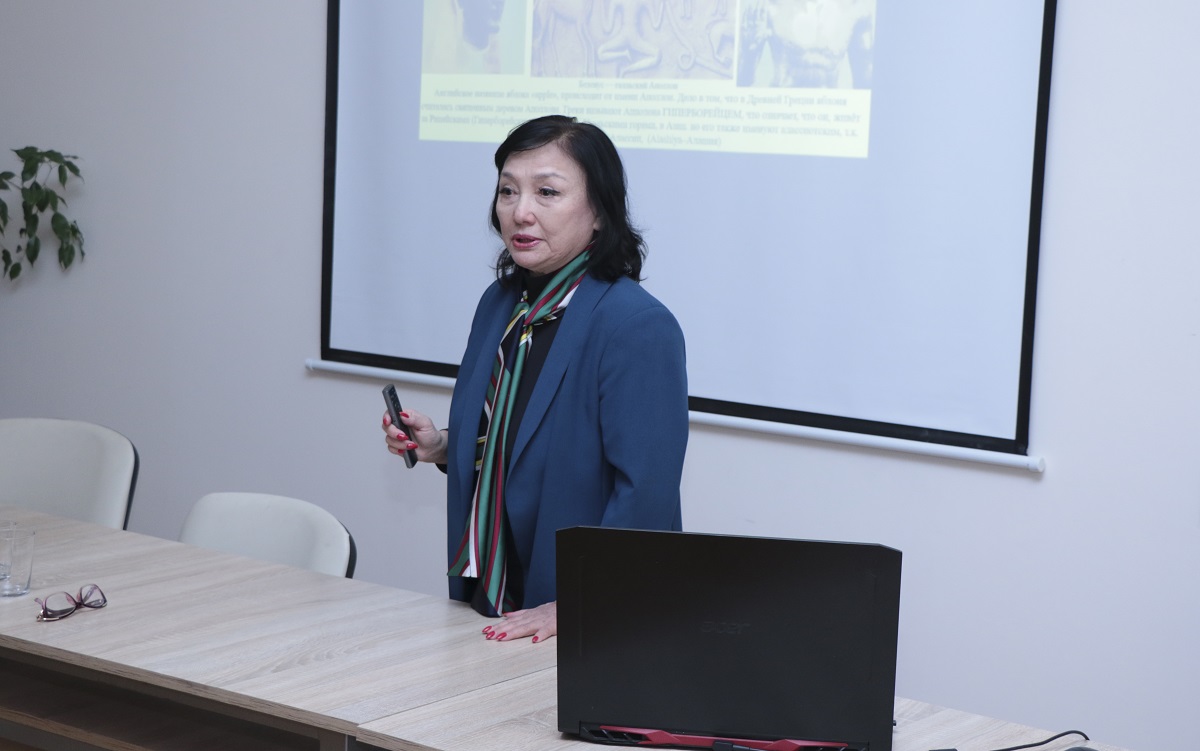



AzMIU Scientists To Investigate the Impact of the “Red Apple” Philosophy on the Architecture of Turkic Peoples with their Kazakh Colleagues
The Azerbaijan University of Architecture and Construction (AzUAC) hosted architects from Kazakhstan. The visit was part of a grant project called “Regional Identity of Independent Kazakh Architecture as a Factor of Sustainable Development in the Conditions of Globalization”.
Gulnara Abdrassilova, professor of the Faculty of Architecture of the Kazakh Leading Academy of Architecture and Civil Engineering, who is the scientific leader of the project and Leyla Rahimjanova, the Associate Professor met with the academic staff and students of AzUAC within the framework of the visit.
“Apple is a Symbol of Turan” was the subject of Leyla Rahimjanova’s extensive presentation during the meeting at the Italy-Azerbaijan Design Center.
Before the presentation, Farid Karimov, the director of the center, greeted the guests and said that he was happy to see them at the university. Highlighting the shared cultural heritage of the Turkic peoples, Farid Karimov emphasized the growing relationship between Azerbaijan and Kazakhstan, as well as the higher education institutions of two countries.
In her speech, Gulnara Abdrassilova said that relations between our countries have deep roots and how, as Turkic-speaking peoples, the peoples of Azerbaijan and Kazakhstan share similar ethnic, religious, and cultural values. Drawing attention to the close and healthy cooperation between AzUAC and the university where she works, Gulnara Abdrassilova emphasized the significance of future relationship expansion.
Following the professor’s speech, there was a presentation by Leyla Rahimjanova titled “Apple is a Symbol of Turan”.
According to the presentation, apple is considered a sacred fruit in Turkish and Altai beliefs and mythology. Other names for it are Alma, Olma, Ulma, and Ulmo: “There is a belief that apple originated in Almaty, the capital of Kazakhstan, which was formerly known as Alma Ata. Growing in almost every part of the world, it has become a symbol. The Red Apple ideal has been studied from a variety of aspects up to date, drawing on Turkish, Eastern, and Western sources to illuminate its mythological, religious, national, geographical, historical, political, statehood, and literary features, as well as how this ideal is interpreted in the Turkish and Islamic, as well as the Western and Christian worlds, its various characteristics, different attributes and common sides have been explained”.
The speaker pointed out that the holy fruit had not passed without making an effect on architecture based on historical sources. She also underlined how numerous examples connected to the Red Apple can be revealed thanks to the current scientific research. Historical monuments, architectural examples, clothing, and many other things serve as living witnesses of this.
After the presentation, Kazakh architects proposed working together to expose the “Red Apple” philosophy, to research it, to reveal Turkish traces, and to investigate contributions of Turks to global culture.



